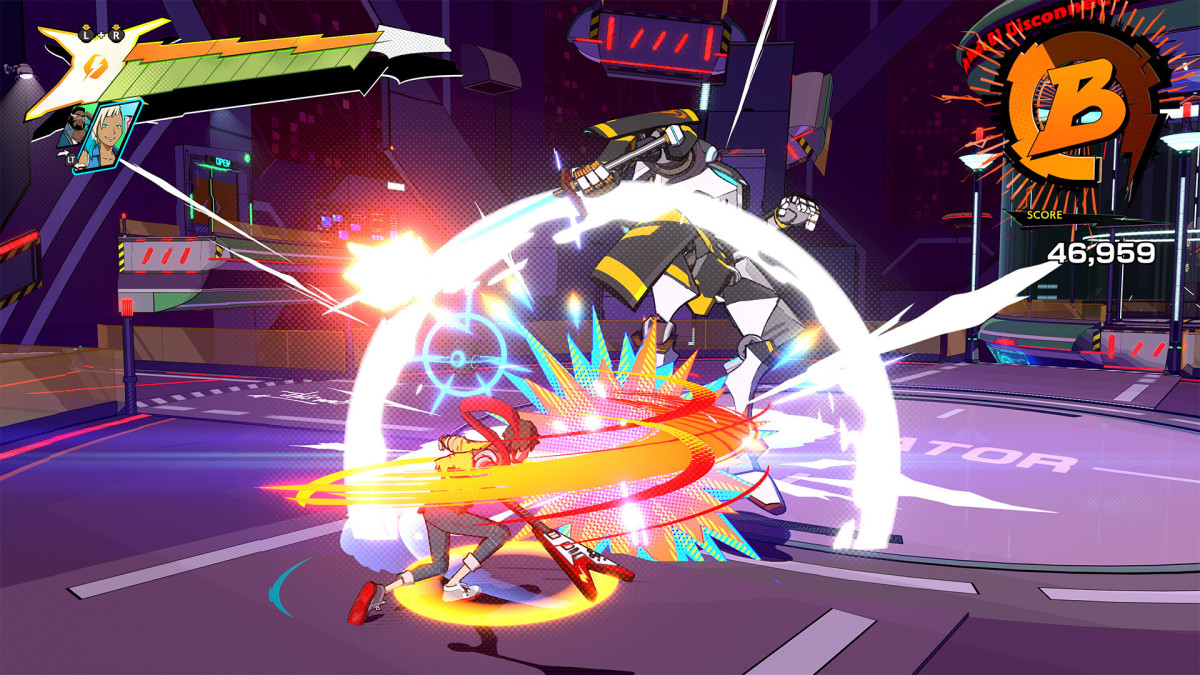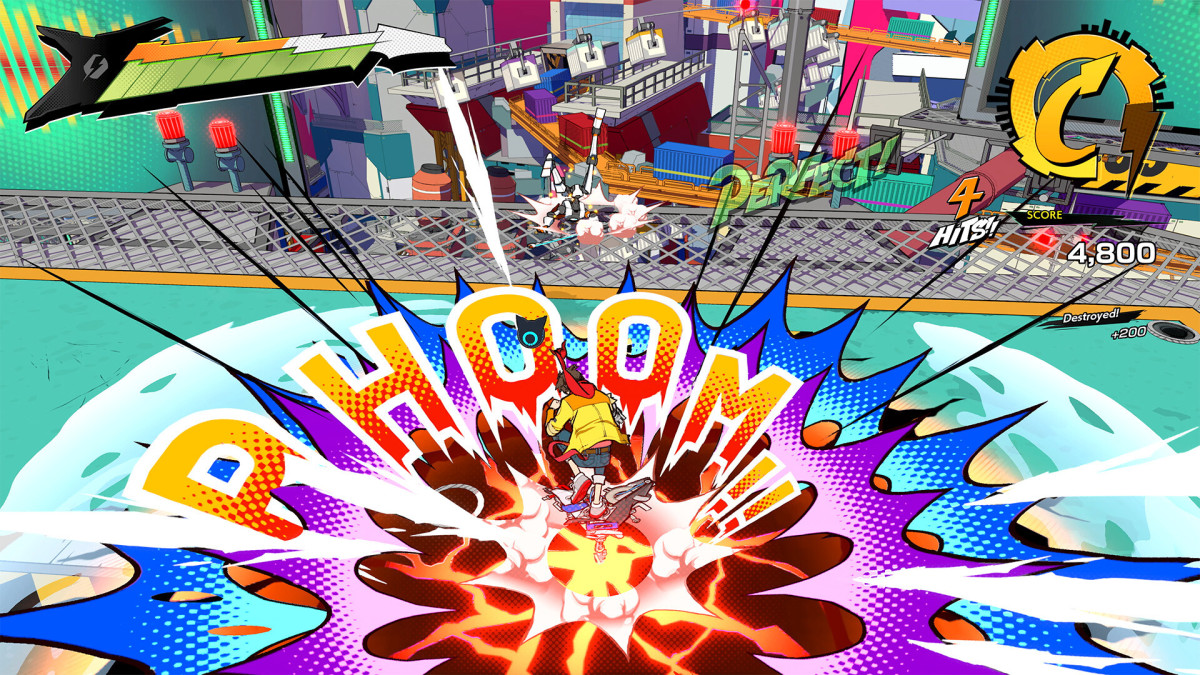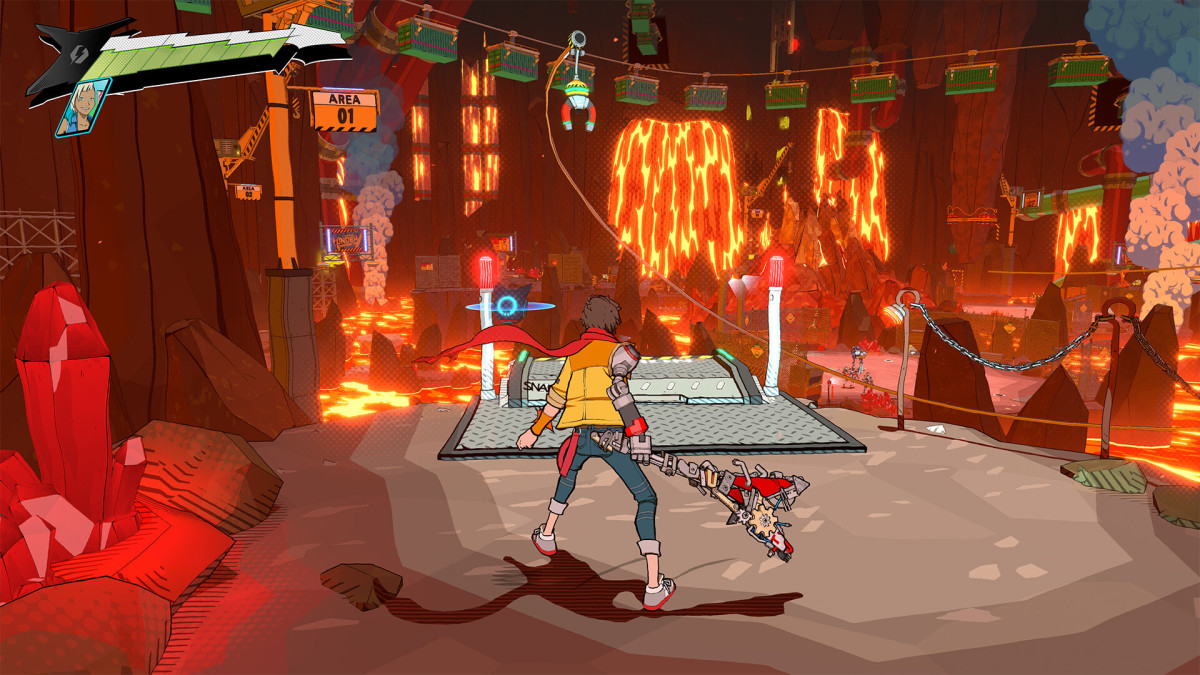Hi-Fi Rush review: A creative risk more should take

It’s not common for a big-budget game to be released to the public on the same day it’s announced. With no marketing behind it, Hi-Fi Rush relied almost entirely on word of mouth to get people to play. This was helped by being released on Xbox Game Pass day one, so those who were unsure could try it for free. It’s a risky move, and if the game wasn’t good, people would immediately know.
However, Hi-Fi Rush is good, and it seems Xbox knew it. It’s a rhythm-based action game, where platforming and melee combat are performed on the beat. While you start off with a small number of combat options in your arsenal, more are added to the mix as the game goes on. You’ll begin with just basic attacks, before adding in a combo finisher, grapples, parries, and summons. All of these need to be done on the beat and lead to both varied and intense battles.

These are at their best during the boss fights, which introduce new elements in each phase. Instead of throwing overpowered enemies at you consistently, it continuously changes up the formula, never allowing you to get bored. Each boss fight is a puzzle to figure out, and Hi-Fi Rush always keeps you from getting too comfortable.
Stronger enemies are continually introduced, and you’ll need different strategies and summons to overcome each one. There’s also no definitive way in which to take down each one allowing you to experiment with which combination works best for you. There are also a number of accessibility options to help out. As well as standard difficulty settings, there are other options to help you if you’re struggling. For me, if a rhythm game relies on sound cues, I’m at a loss, as I am deaf in my right ear. However, Hi-Fi Rush gives a lot of visual cues as well, which have a wide range of colorblind options.

Where the game falls a little flat is in the platforming. Platforming and parts of the environment moving to the beat is an interesting and unique concept that gives way to some innovative challenges. However, Chai moves like there are magnets in the ground, weighing his robotic arm down. This is to keep platforming in time to the beat, but it means that fun movement options are sacrificed.
Pacing in general is sacrificed for the sake of keeping strictly to the soundtrack. Every song has roughly the same rhythm not to overwhelm the player, and each of these give Chai a distractingly slow walk speed. Dodging to the beat can speed things up, but is difficult to do around corners. When walking is such a large part of the game, this feels like a bigger problem than it might seem at first.
The pacing issues also embed themselves into the story. There is a lot of story and dialogue, and some of this is introduced in heartwarming ways. Dialogue between robot NPCs can come up and resolve throughout levels with the same characters, and gorgeous 2D cutscenes add to the game’s general vibe. However, your teammates will often interject while you’re playing. You can keep moving at this time, but you can’t open doors or pick up collectibles, leaving you waiting around.
I’m not sure if the levels were actually overly long, or whether the number of times I was stopped just made it feel that way. This wasn’t helped by the fact that at the start I found the characters annoying. However, like the stiffness of the platforming, it grows on you over time. I started out wincing at some of the ‘witty’ remarks and fourth wall breaks, but you slowly understand it’s all in character. The characters end up likable, a good indication of great character development, and I was soon laughing at the one-liners.

The story, on the other hand, is basic and fairly cliched. An end-game twist seemed so obvious that I thought the twist was going to be anything other than the very obvious thing. Turns out that the obvious thing was the ‘twist’, and I felt no payoff for having figured it out. A little more subtly in the overall story would have elevated the other incredible core elements.
While the story is lacking, Hi-Fi Rush gets the important things right. As with any rhythm game it lives and dies on the soundtrack, and this is perfection. A mix of licensed songs, and original music flow together, and the added effects of your movement blend in perfectly with the songs. It also performs incredibly smoothly. I encountered one bug, where I ended up on a platform I clearly wasn’t supposed to be on, and was stuck to the floor. Resetting to the previous checkpoint didn’t lose me too much progress though. Otherwise, it performed to the level that all games should, without stuttering, lag or crashes.
What you will remember about Hi-Fi Rush is just how charming it is. It’s so rare for a game from one of the major developers to take a creative risk, and Hi-Fi Rush does just that. Not only is the core of the game innovative, but the way each character is written takes a big risk of having people switch off before they develop and you grow to love them. I hope Hi-Fi Rush is incredibly successful. I hope it teaches the industry that creative innovation can also create profits, and we see more new and interesting ideas from the big boys in the future.
Score: 8/10
Version tested: Xbox Series S
